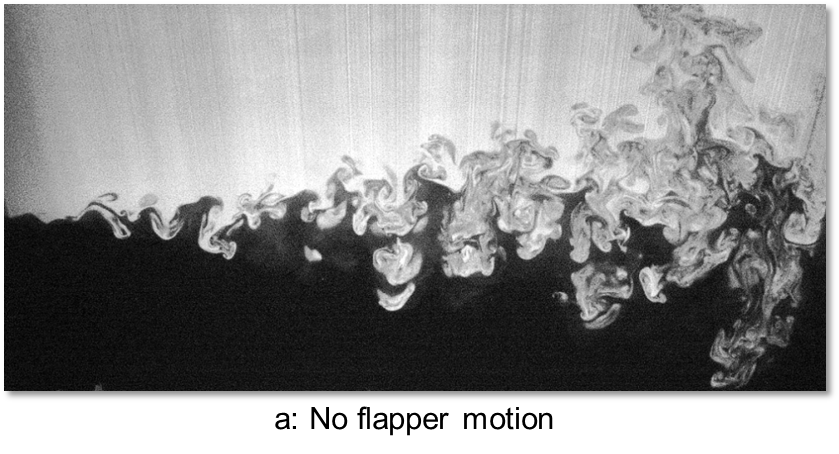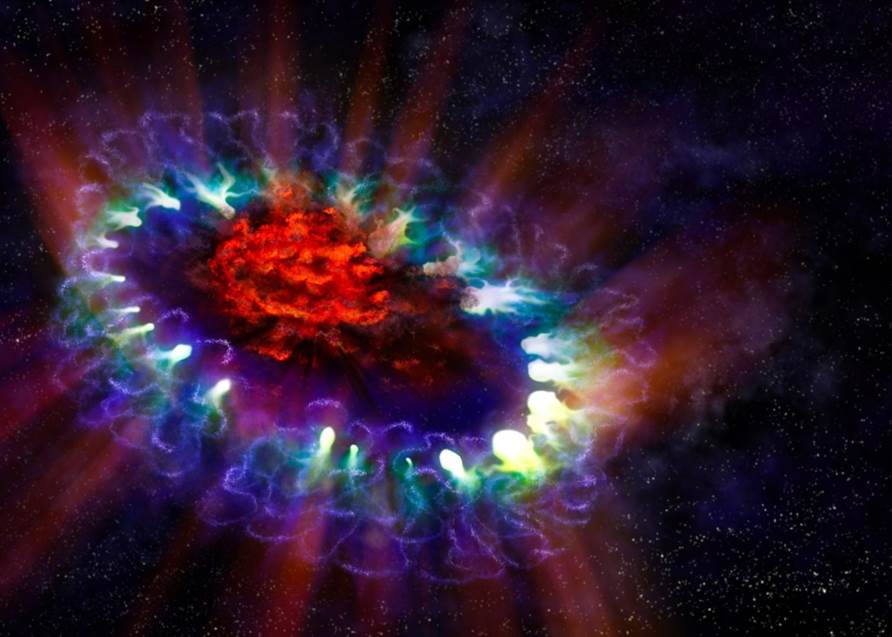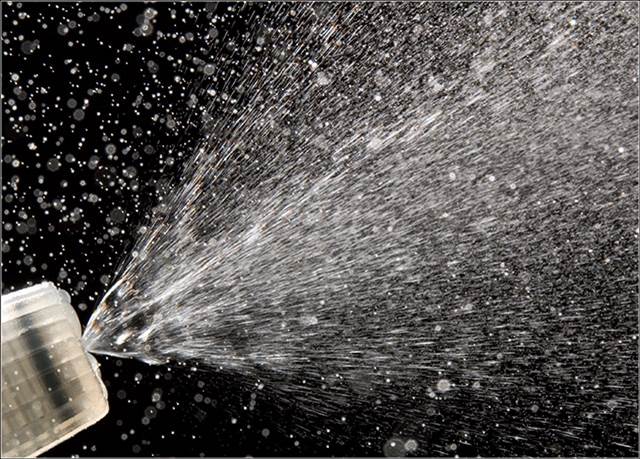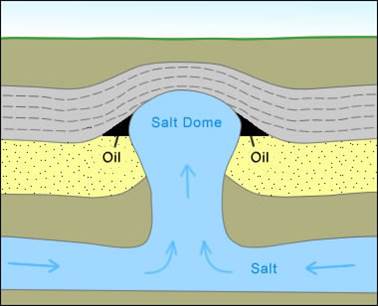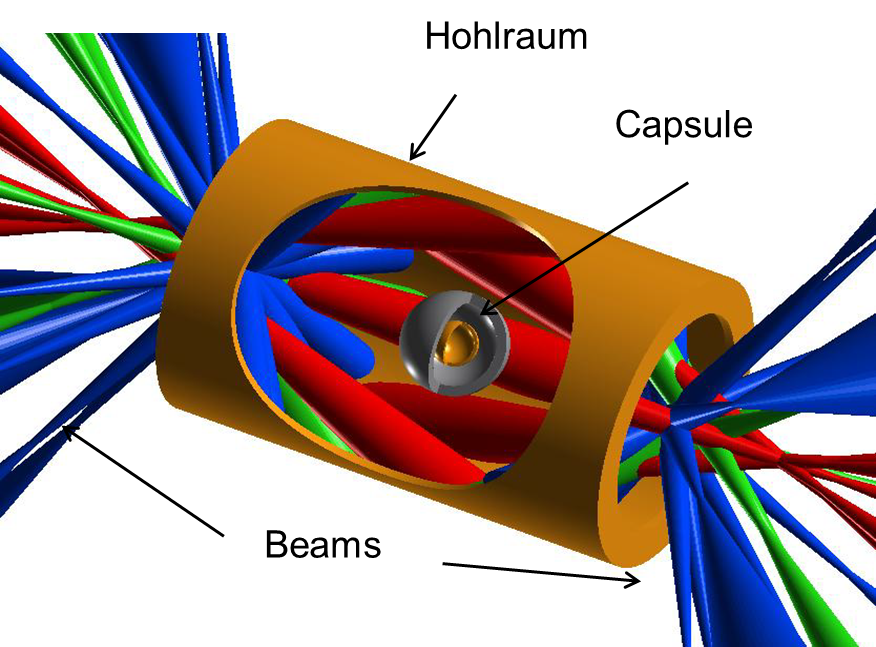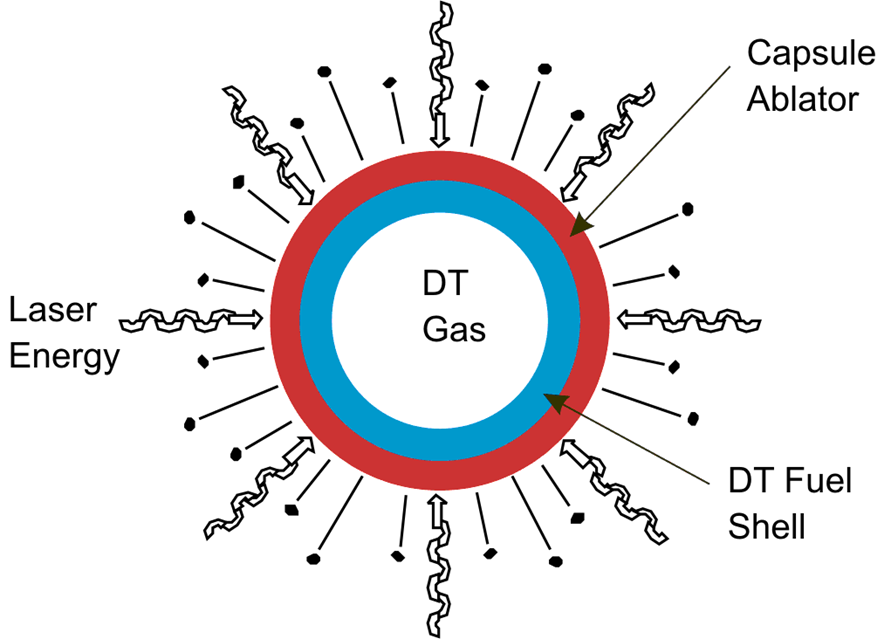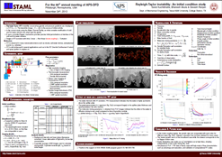Research ![]() Rayleigh-Taylor
Rayleigh-Taylor
Motivation: The Rayleigh-Taylor instability (RTI) is a buoyancy-driven fluid instability which occurs when a high-density fluid is accelerated into a low-density fluid in the presence of perturbations between the fluids. Oftentimes, this acceleration is the result of gravity.
RTI is evident in a large number of variable density fluid scenarios, many of which are geological, astrological, or meteorological in scope. RT Plumes and spikes can be seen in the fringes of exploding supernovae and in the interactions of nebulae. Many weather patterns and oceanic currents are governed by RT like fluid mixing.
One of the most important applications of RTI is in nuclear energy in the form of Inertial Confinement Fusion (ICF). Fluid mixing as a result of density gradients in the fuel pellets causes dilution of the fuel, and results in a lower energy yield. Being able to understand and predict the mixing using turbulence models is an important step towards making nuclear fusion energy a next generation energy source.
Current Research: Typically RTI is studied in a box type experimental setups, where a lighter fluid is placed over a heavier density fluid and the box is accelerated downwards using different mechanisms causing a acceleration opposite to the direction of gravity. These type of experiments run for very short times and it’s hard to collect turbulence statistics. Here at STAML, we study RT induced mixing at different density ratios (characterized by a non-dimensional number called Atwood number, At = (ρh – ρl) / (ρh + ρl), where ρh and ρl are the densities of the heavier and lighter fluids respectively) in a convective type system, where different streams of fluids at same convective velocity are initially separated by partitions. At the end of the partition the heavy fluid in the top stream starts to mix with the lighter bottom stream. This type of statistically steady flow facility allows for larger data collection times for turbulence statistics at late times. Using suitable combinations of fluids and initial conditions, RT mixing at different stages of evolution is studied. This type of convective system also allows studying the effect of Kelvin-Helmholtz instability (KHI) on the growth of RTI, by creating velocity difference between fluids.
We investigate RTI experimentally using the Gas tunnel and Water channel facilities, while also performing numerical simulations to support experimental observations. We could perform RTI studies for a wide range of density contrasts, using the gas tunnel, which employs gases such as Helium, Air and CO2, generating Atwood numbers between 0.03 and 0.8, or the Water channel, which employs hot and cold water streams corresponding to lower Atwood numbers between 0.0001-0.003.
Gas tunnel studies: The gas tunnel experimental facility that is being used to study is described in the facilities section. The current research concentrates on the study of combined KHI and RTI and RTI at high Atwood numbers around 0.7. Experiments using this facility are extending the limits of mixing Reynolds number to about 25,000, at which late-time turbulent stages of the mixing layer can be studied.
For the combined KHI and RTI, shear (KHI) is generated between the streams by adjusting the air dampers. For the experiments performed at Atwood number 0.04 and 0.08, we noticed that the flow is dominated by vortical rollups (cat-eye structures) at earlier times and vertical plume structures at later times. Richardson number quantifies the competition between buoyancy and shear. We noticed that the transition between KHI and RTI happens around Richardson number -1.5 to -3.0. We also studied the molecular mixing behavior of the combined instability at the center of the mixing layer. We observed higher amount of molecular mixing at the center of the mixing layer between the streams in the KHI dominated region. Study of combined instability at higher Atwood numbers is in progress.
RTI at higher Atwood numbers (At > 0.7) is important to study as it emulates the phenomenon in ICF between the fuel capsule surrounding material and the fuel. These experiments are in progress in the newly built multi-layer system. Some of the previous experimental studies are presented in this poster.
Water channel studies: Typically, RTI has characteristic mushroom or finger shaped structures of lighter fluid escaping into the heavier fluid (bubbles) and heavier fluid penetrating into the lighter one (spikes). The coupling of initial modes and its effect on bubble saturation is being studied at the water channel. Also, the effect of secondary structures due to Kelvin-Helmholtz instability (KHI) on mixing is studied. By modifying the amplitudes and phase angles of the initial perturbation, eventual breakup and the turbulent stages of RTI, where growth is self-similar are being studied. As of yet, numerical simulations and experimental data in literature have not attained congruence on the nature of turbulence in RTI flows when compared with classical turbulence. Hence, a better design understanding of RTI turbulence would require experimental data on the mode-coupling, molecular transport effects as well as the flow evolution in the turbulent stage.
For turbulent RT mixing in the ICF, studying the effect of initial conditions, i.e. the initial perturbations on the target surface, on late-time RT mixing rate is important, as this could affect the yield of the reaction. From the Water channel, experimental data regarding the interaction of component wavelengths of a given multi-mode initial condition is generated. Theoretically, these results, although corresponding to low Atwood numbers can be extrapolated for higher Atwood numbers characteristic of the ICF. Previous experimental research in this paper studying the effect of initial conditions can be found here.

